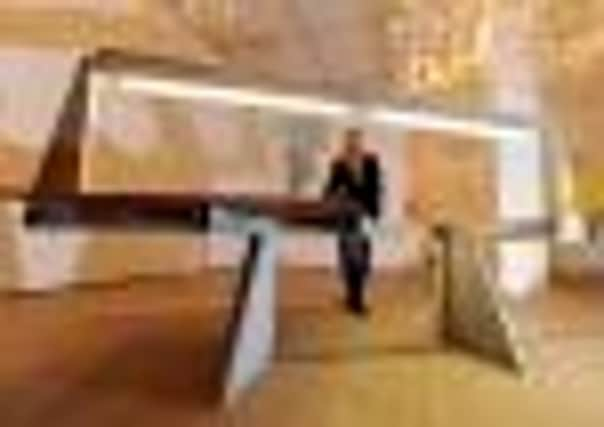Boyce’s Turner Prize win makes it three in a row for Scottish artists


He is the third Scottish artist to win the prize in three years, underlining both Scotland and Glasgow’s thriving place in the international contemporary art scene.
His winning exhibition was a room full of sculptural installations that ranged from a heavy abstract steel and wooden table to fluttering paper leaves on the floor.
Advertisement
Hide AdCelebrity photographer Mario Testino presented the £25,000 award last night. Boyce and another Scottish artist, Karla Black, were among the four nominees, and he joins former winners Richard Wright in 2009 and sound artist Susan Philipz in 2010.
Boyce, 43, is not an untested talent. He has shown work in exhibitions from Glasgow to Zurich and he was Scotland’s representative artist at the Venice Biennale in 2009.
“He has clearly been a strong artist for a number of years,” said Sir Nicholas Serota, director of the Tate, which runs the prize. “Everyone recognises that. He has had some spectacular shows, in Britain and Europe.”
Boyce was born in Hamilton in 1967 and took an MA in 1997 from Glasgow School of Art. His exhibition filled a room at the Baltic arts centre in Gateshead, hosting the Turner prize show this year on only its second time outside London.
The installation, which also included a frame of white metal abstract leaves hanging from the gallery’s ceiling, was inspired by four concrete trees made for a Modernist garden in 1925 by the French designers Joel and Jan Martin and shown that year in Paris.
They have become an obsession for Boyce, supplying the theme for a series of works. He has called them a “perfect collapse of architecture and nature”.
Advertisement
Hide AdThe Baltic exhibition showed strongly contrasting themes of contemporary art, featuring video work by Hilary Lloyd and the paintings of George Shaw, alongside the giant, light-weight papery sculptures that have become Black’s trademark.
Black, from a younger generation of Glasgow artists, was an early favourite among the nominees.
Advertisement
Hide AdSerota noted yesterday that his gallery has bought one of her works from her Venice Biennale show this year, and suggested she could also follow in the footsteps of other nominees to the Tate Modern’s Turbine Hall in London. “She’s a really good artist. She’s going from strength to strength,” he said.
The prize jury, including Katrina Brown, director of the Common Guild in Glasgow, went back for a second look at Boyce’s Zurich show, which it said confirmed the consistency of his work while opening up a new set of poetry.
They “recognised his stature in terms of his pioneering contribution to the current interest which contemporary artists have in historic modernism”.
Serota paid tribute to Boyce’s 2009 Venice Biennale show, No Reflections.
He is likely to be a popular, established choice. Another former Scottish winner, Martin Creed, had singled out Boyce this week as one whose career he knew and admired.
The same was true for Richard Ingleby, director of the Ingleby Gallery in Edinburgh, which specialises in contemporary art. Speaking before the announcement, he said: “Martin Boyce is a terrific artist with a really convincing career behind him and an incredible future ahead of him. “He’s been around, he’s done a few things, and he seems to get better and better. It would be fantastic if he wins.”